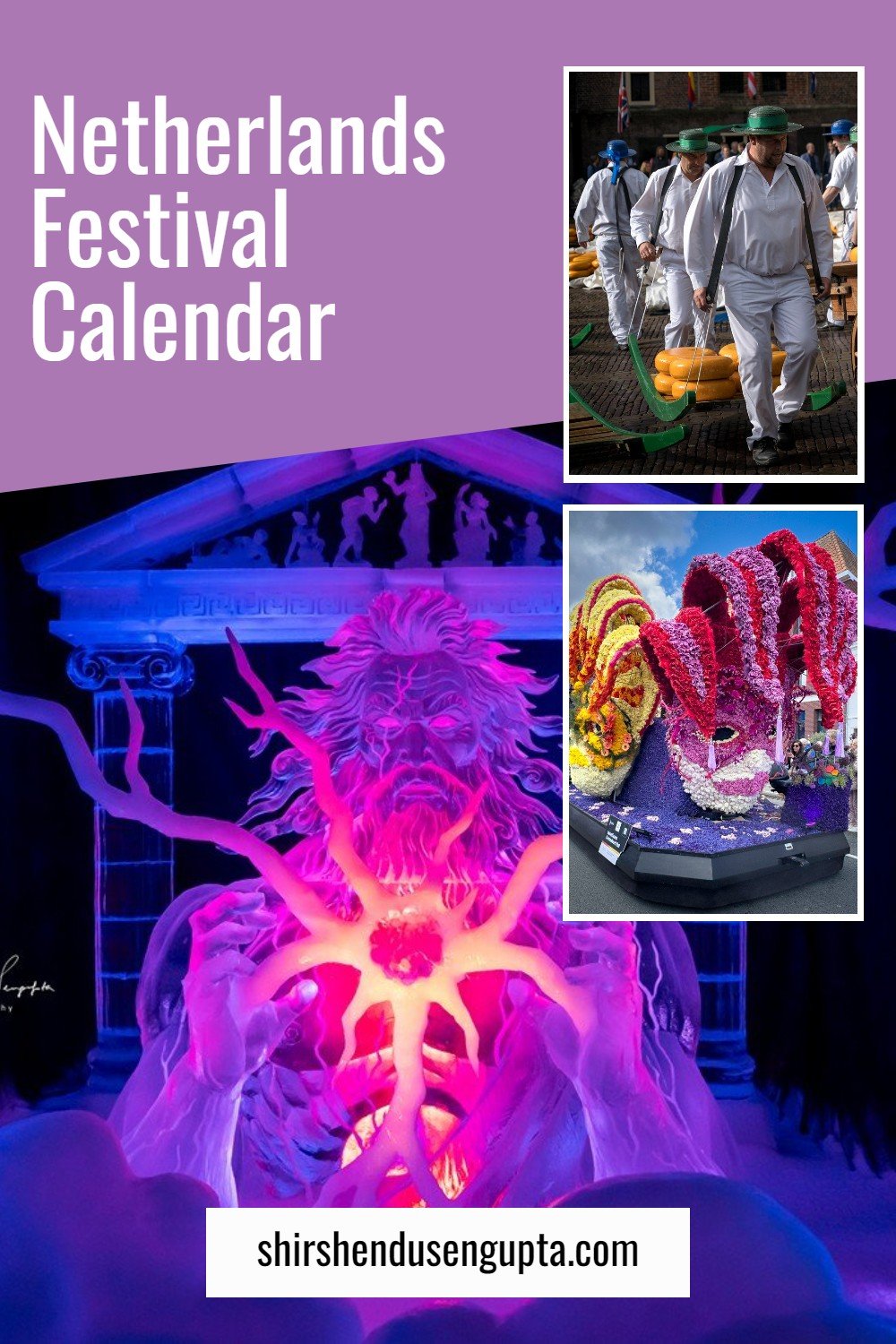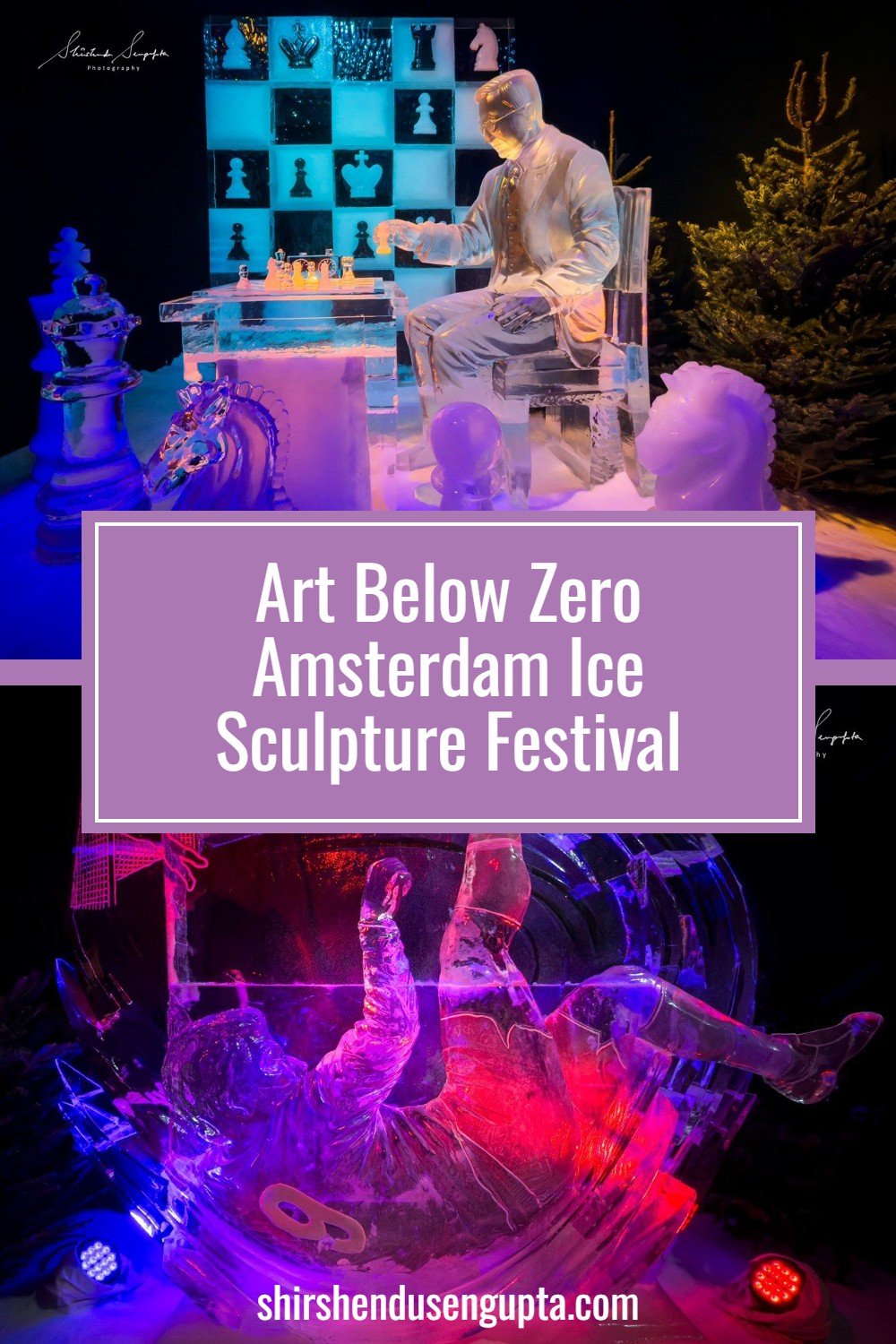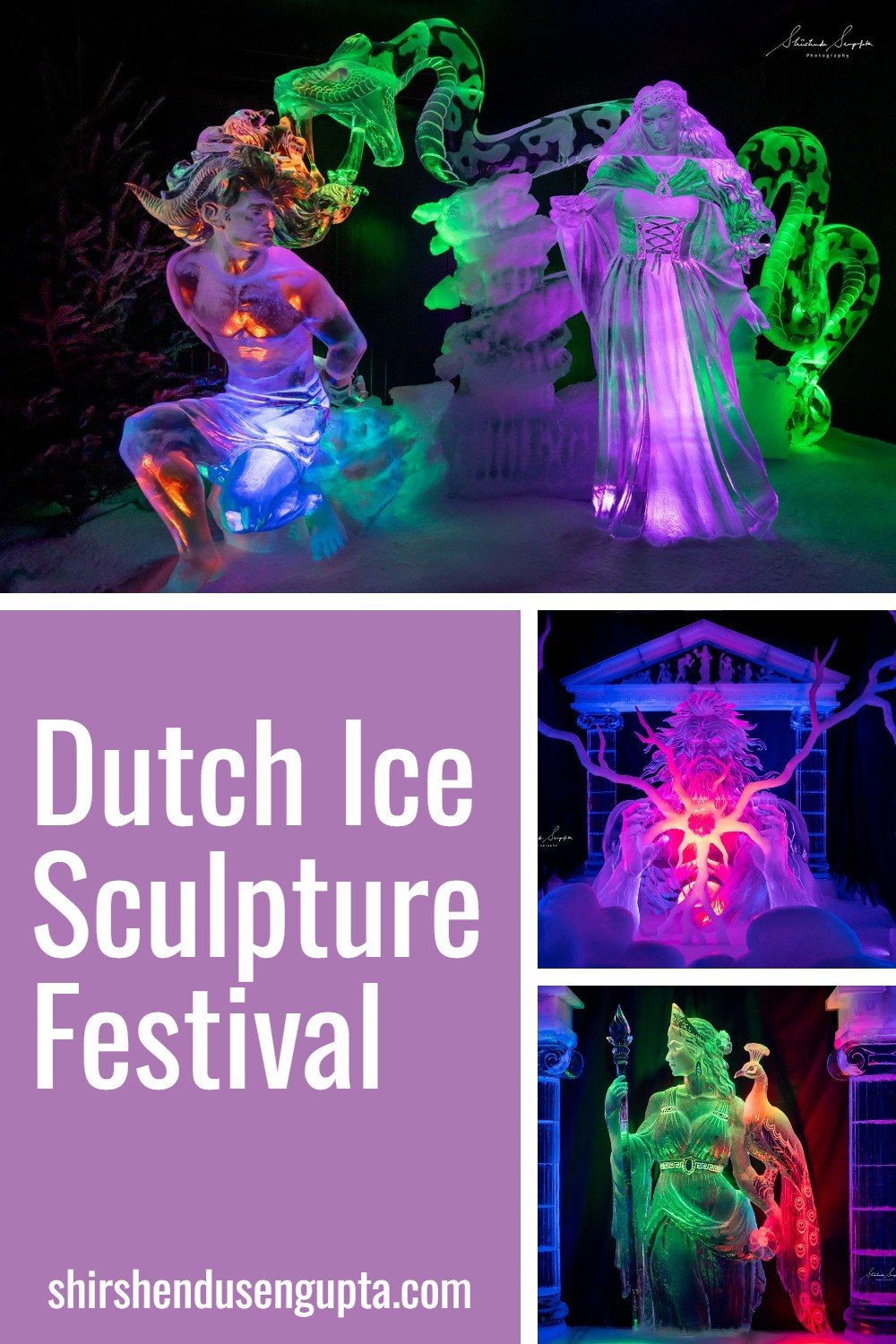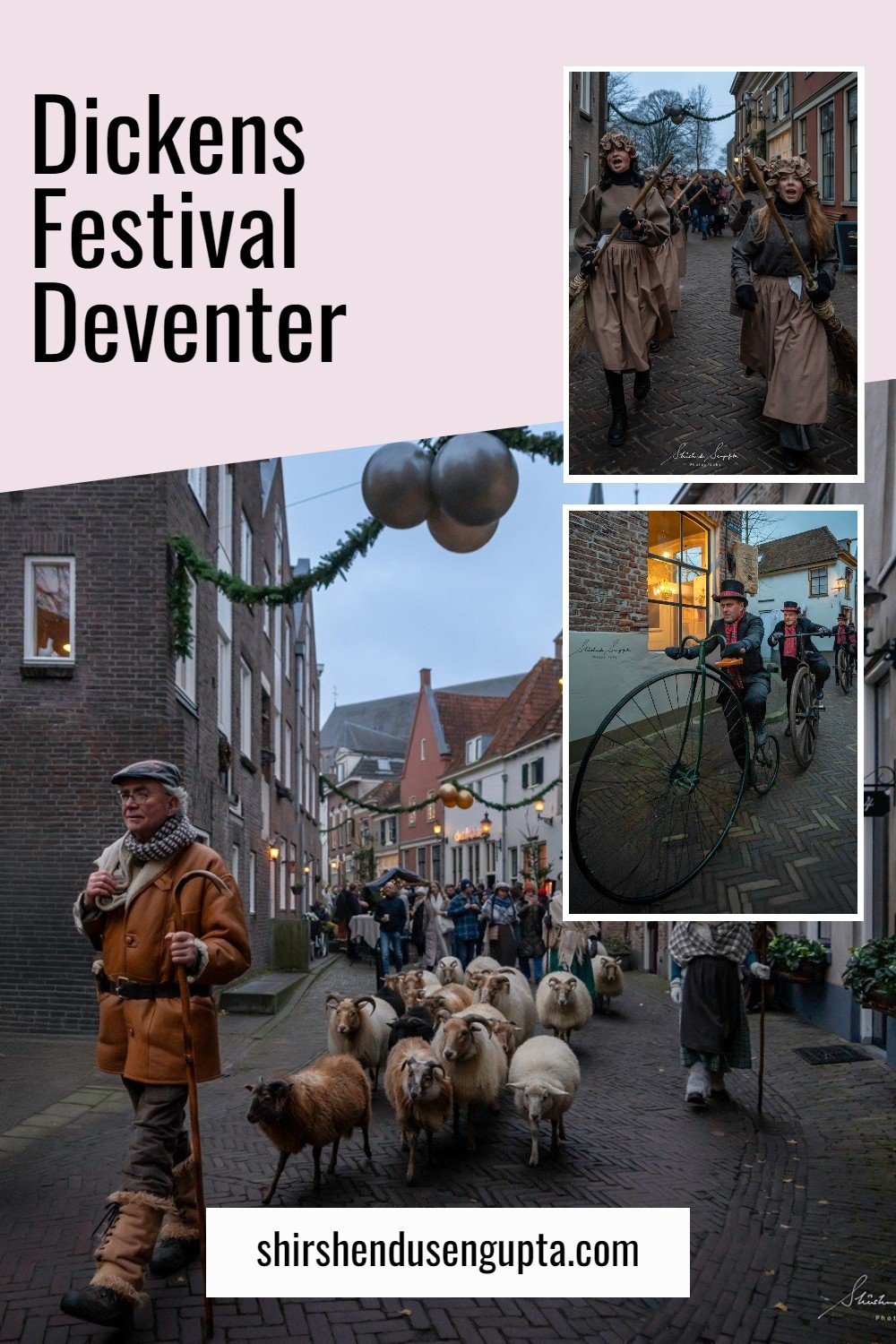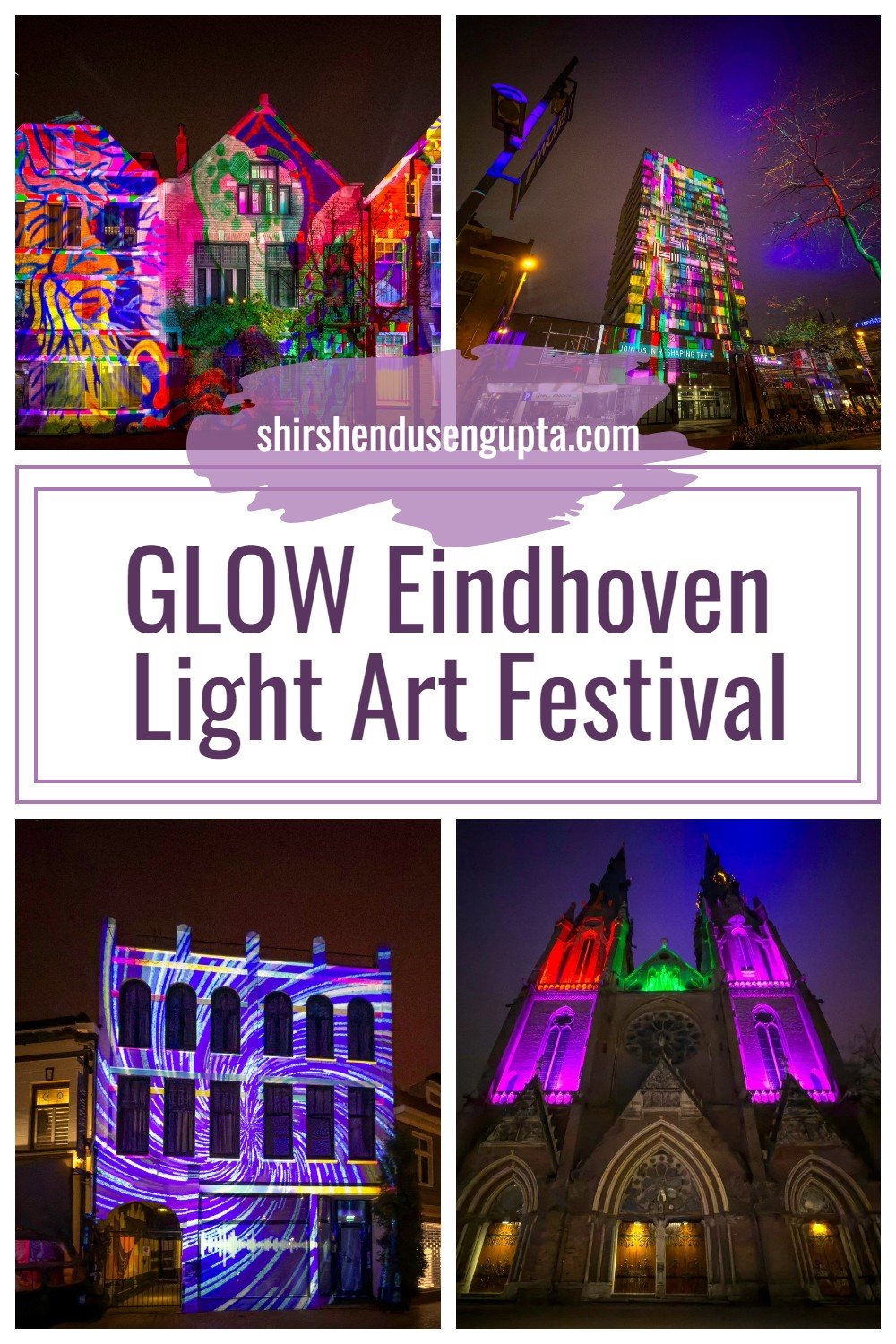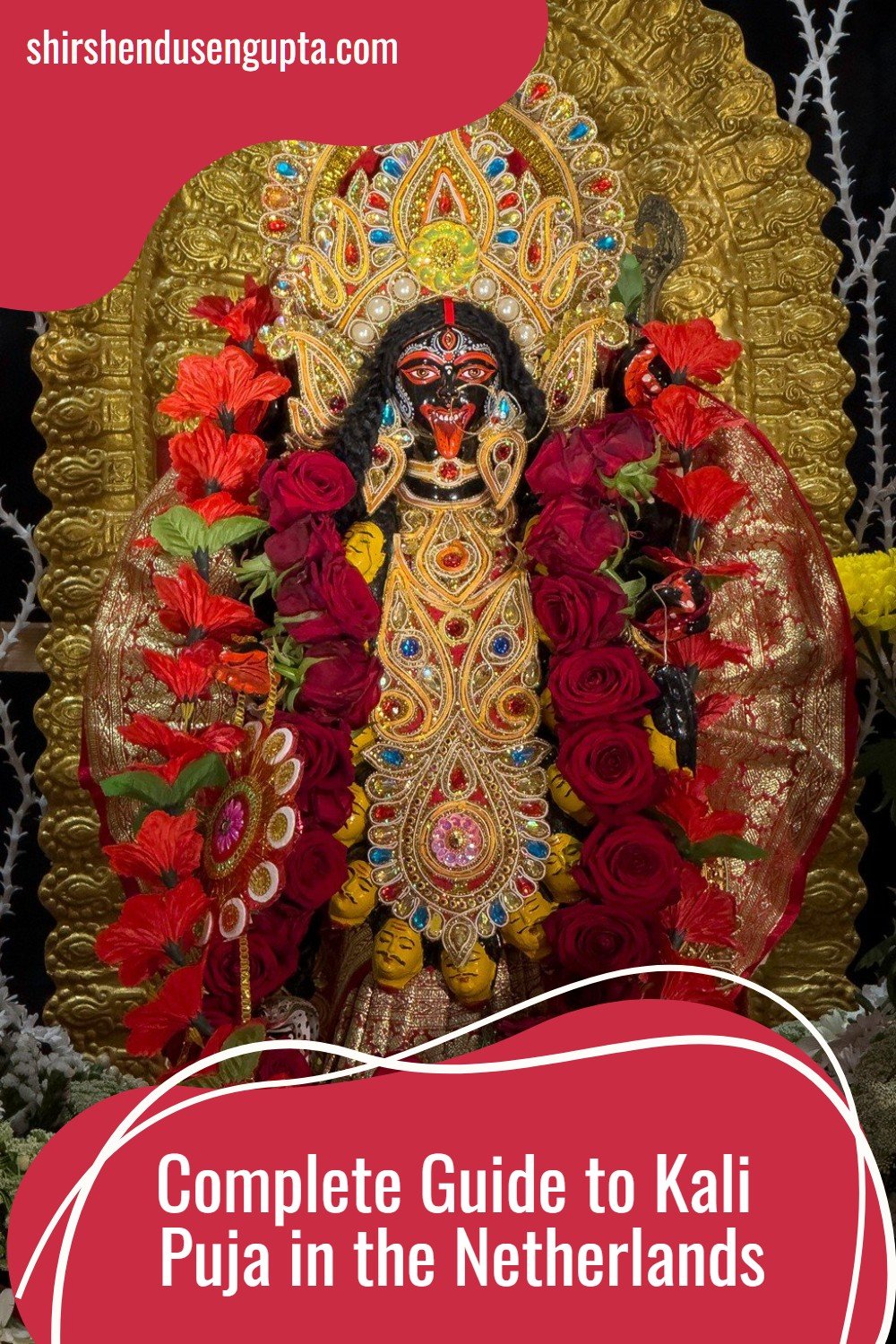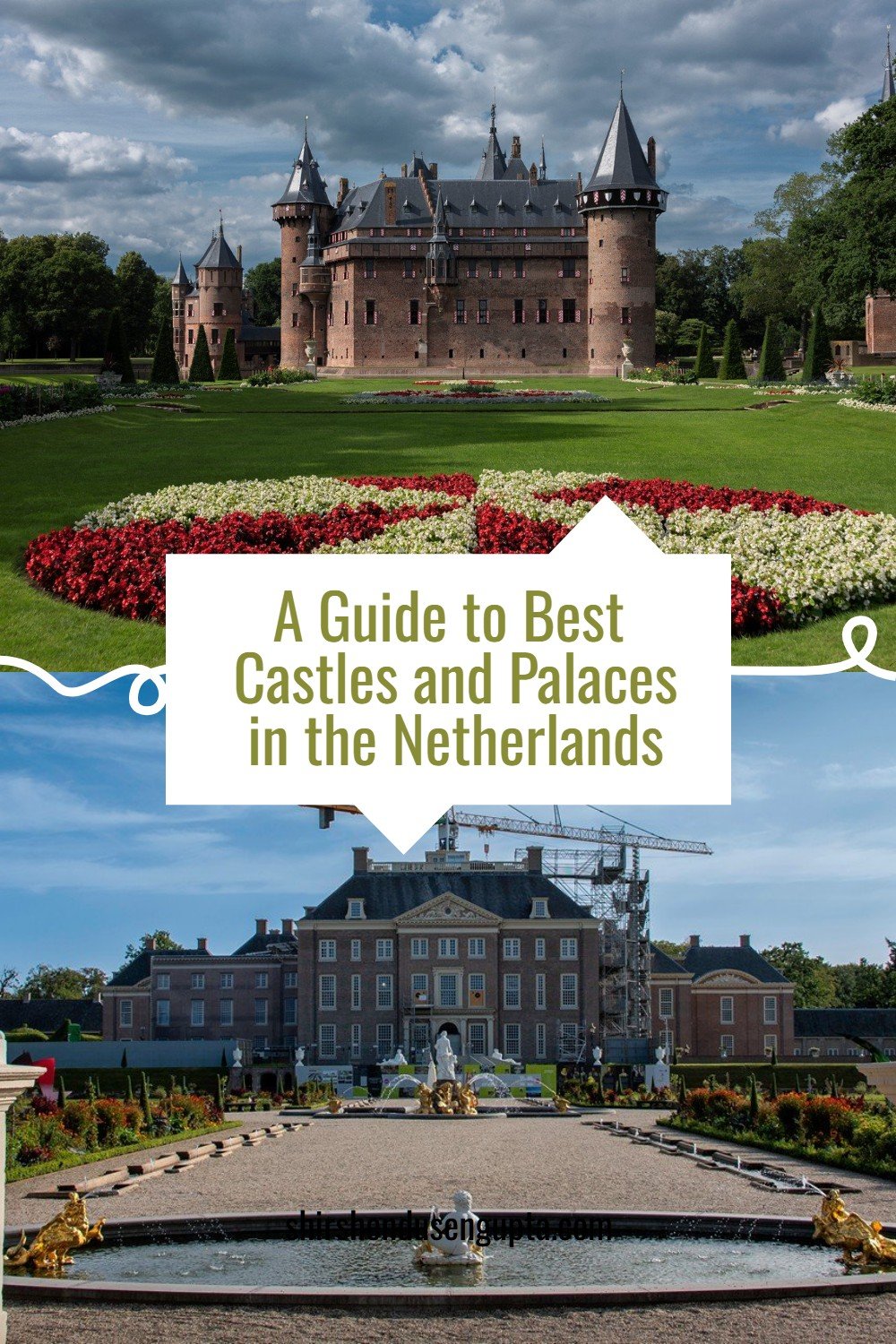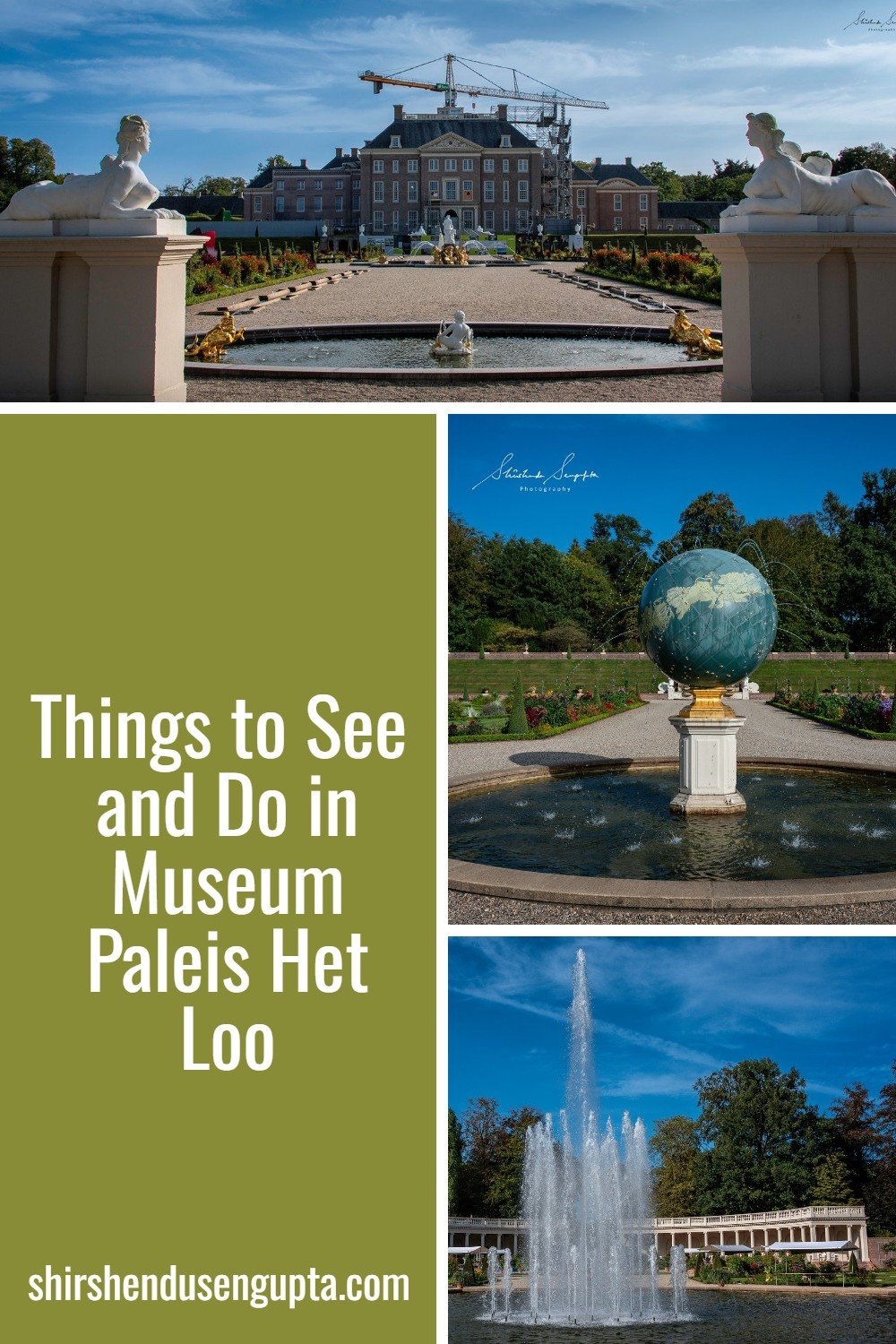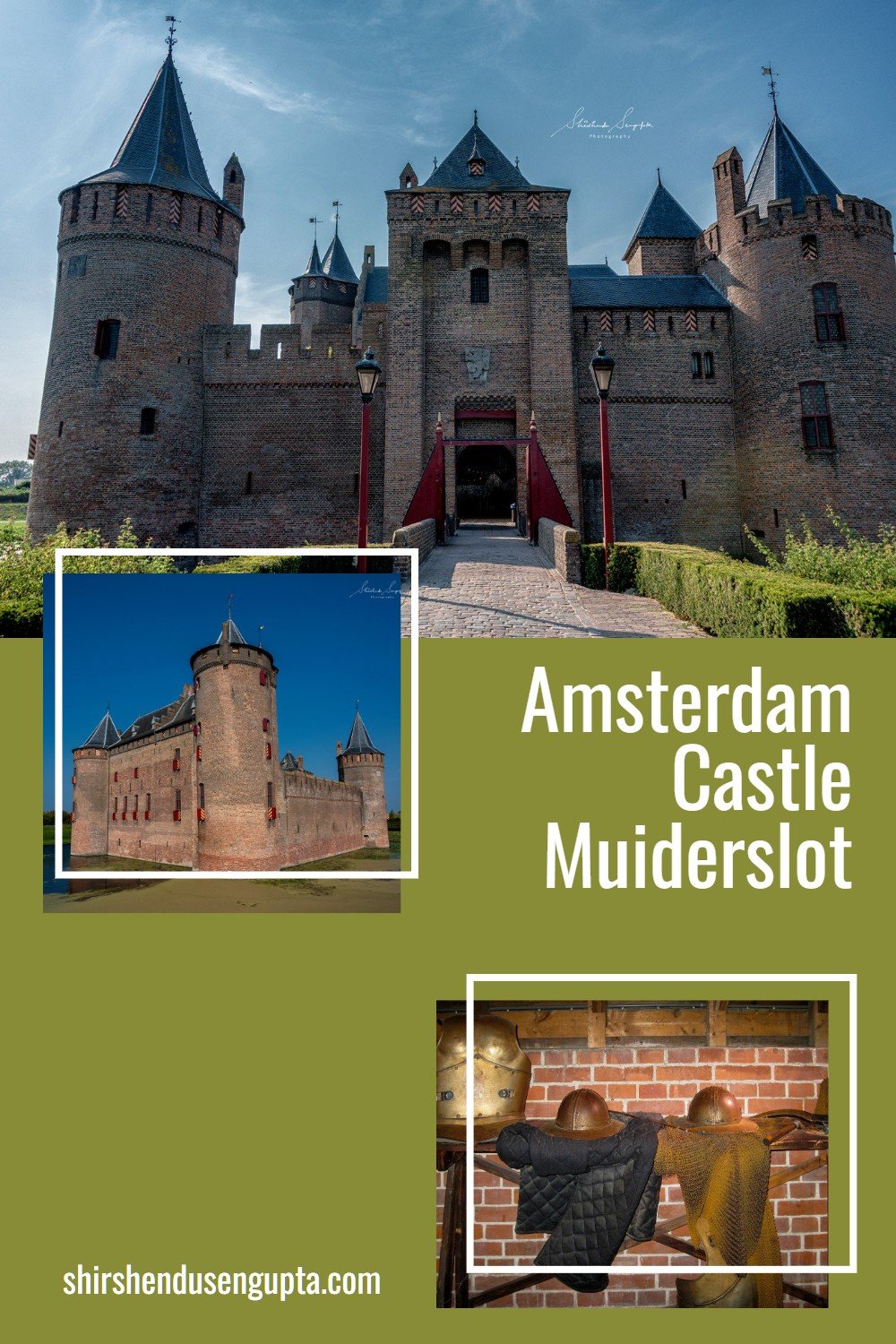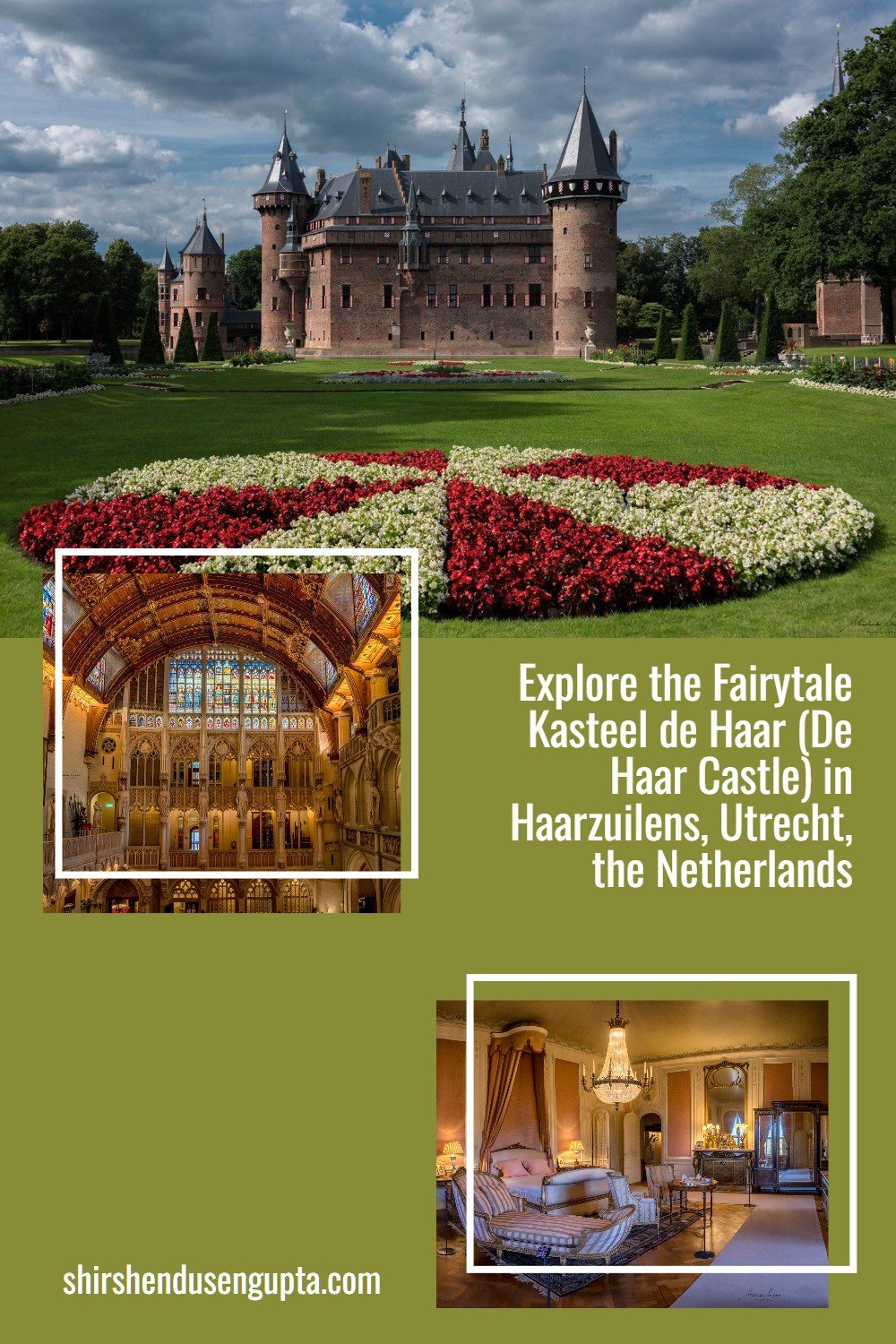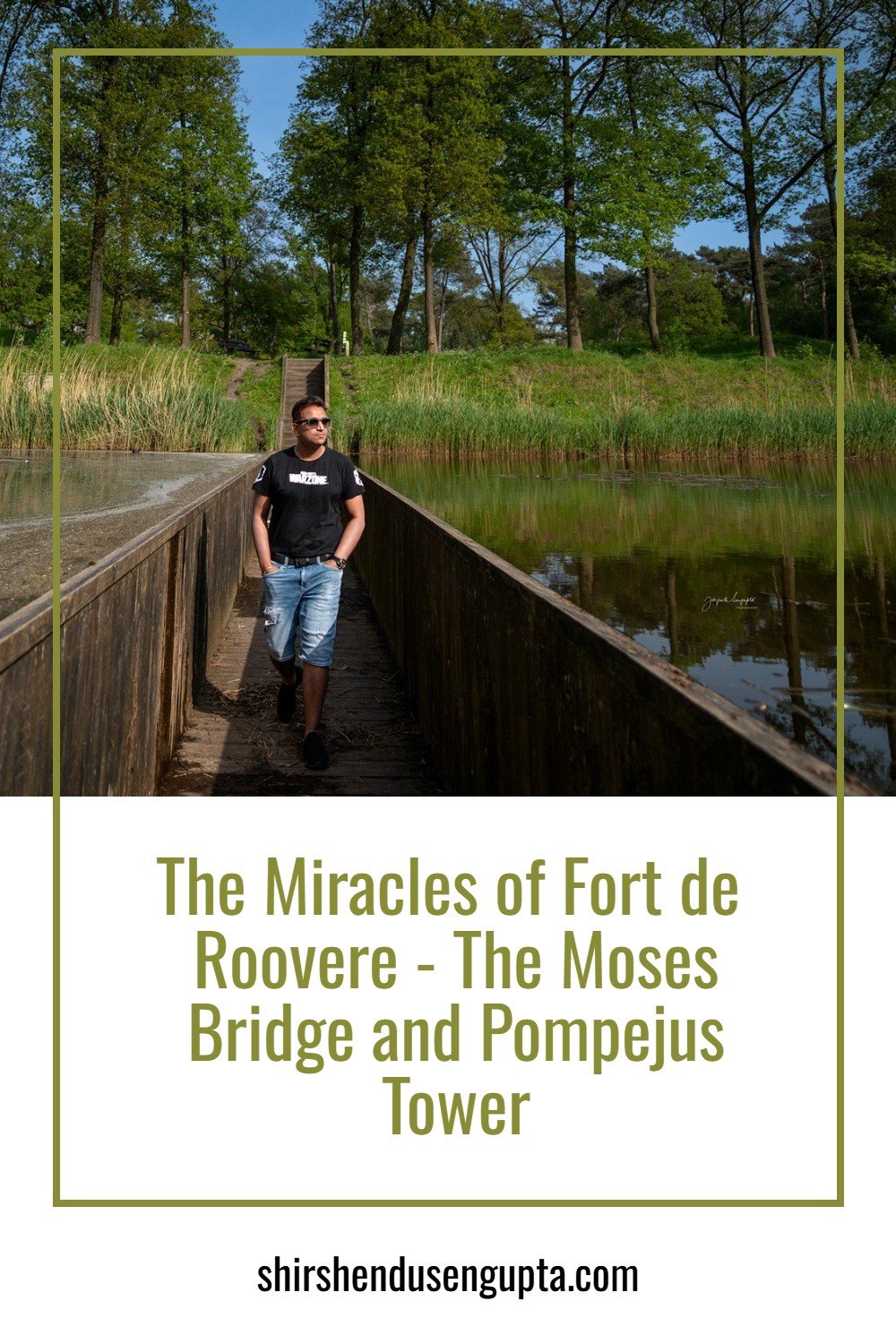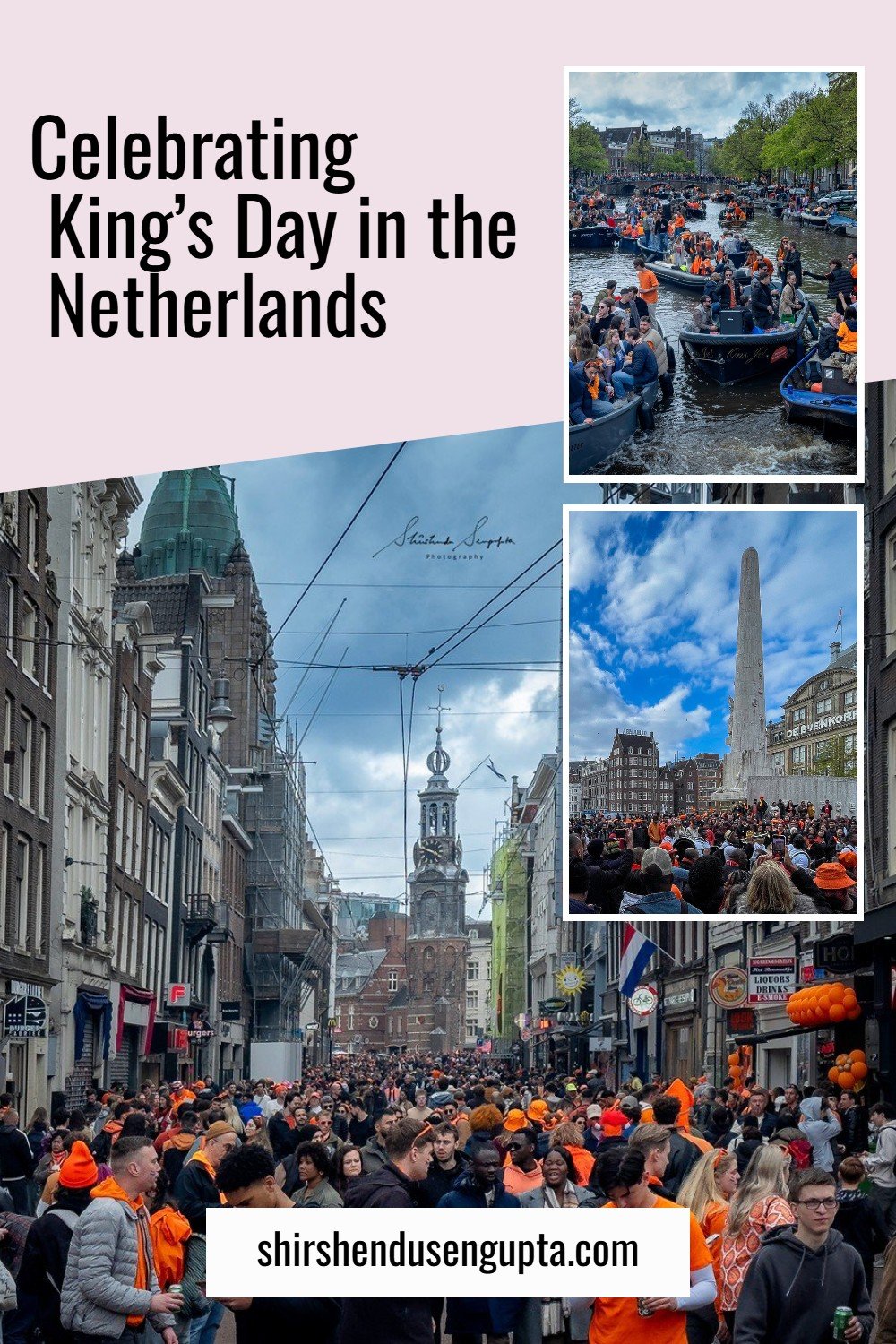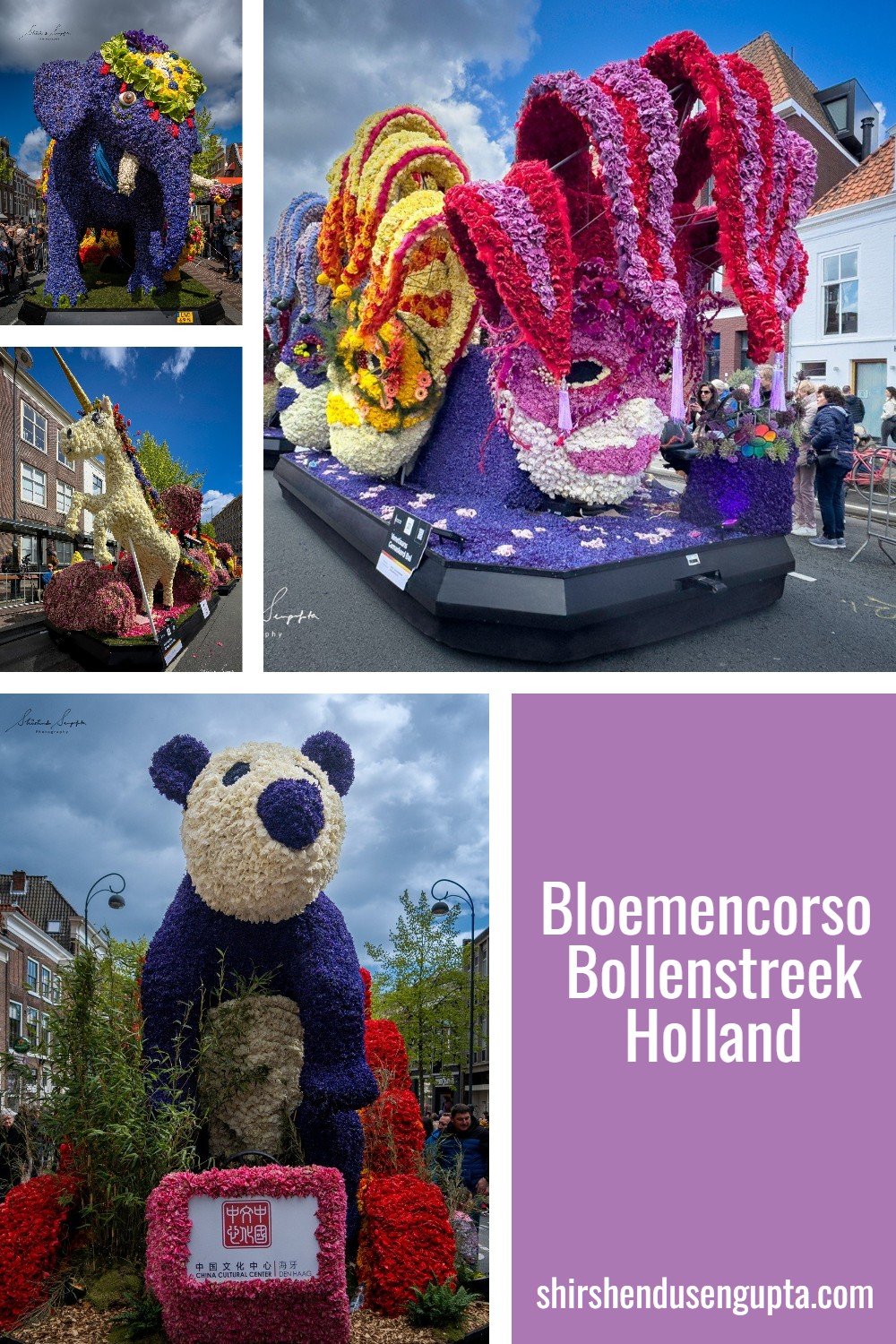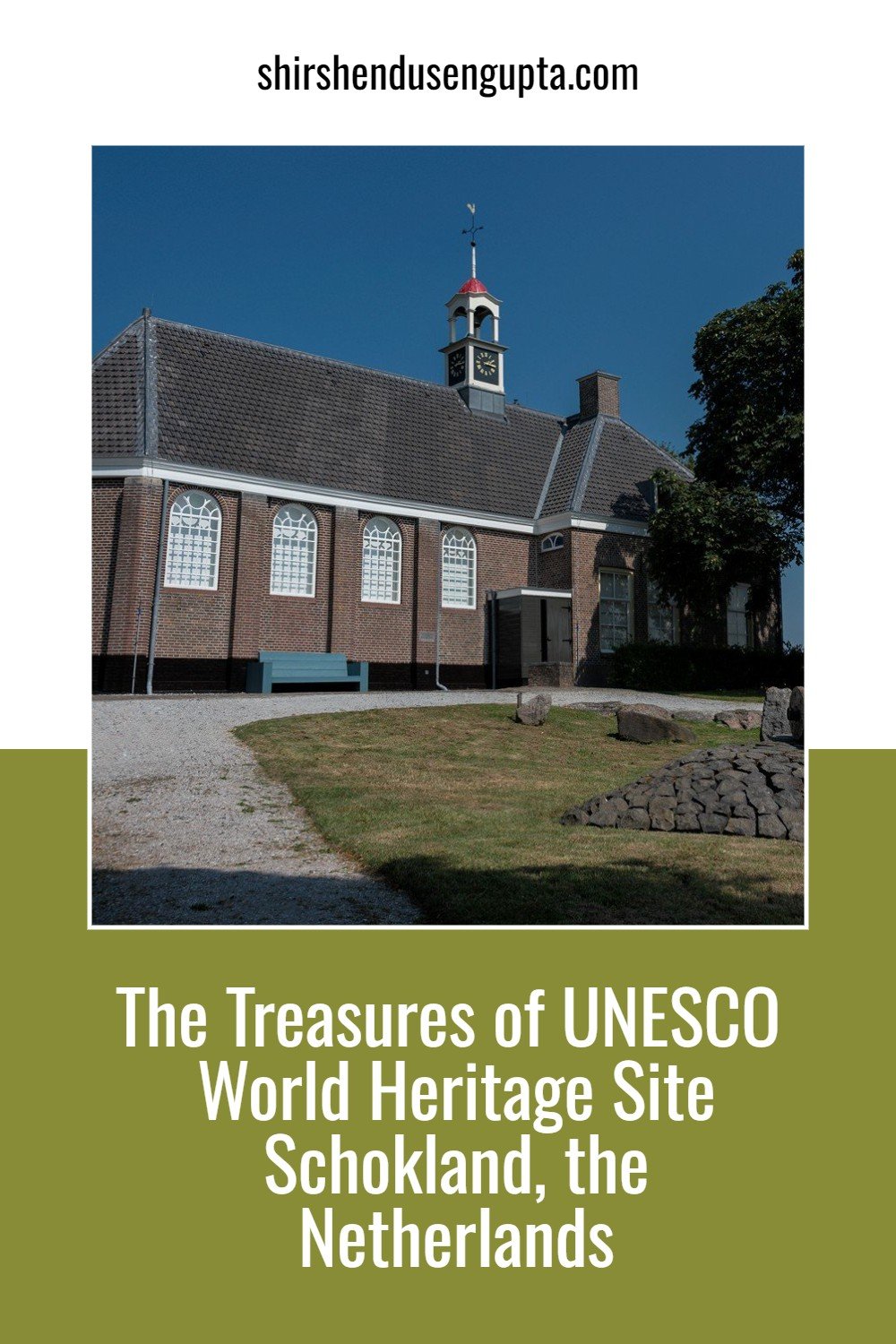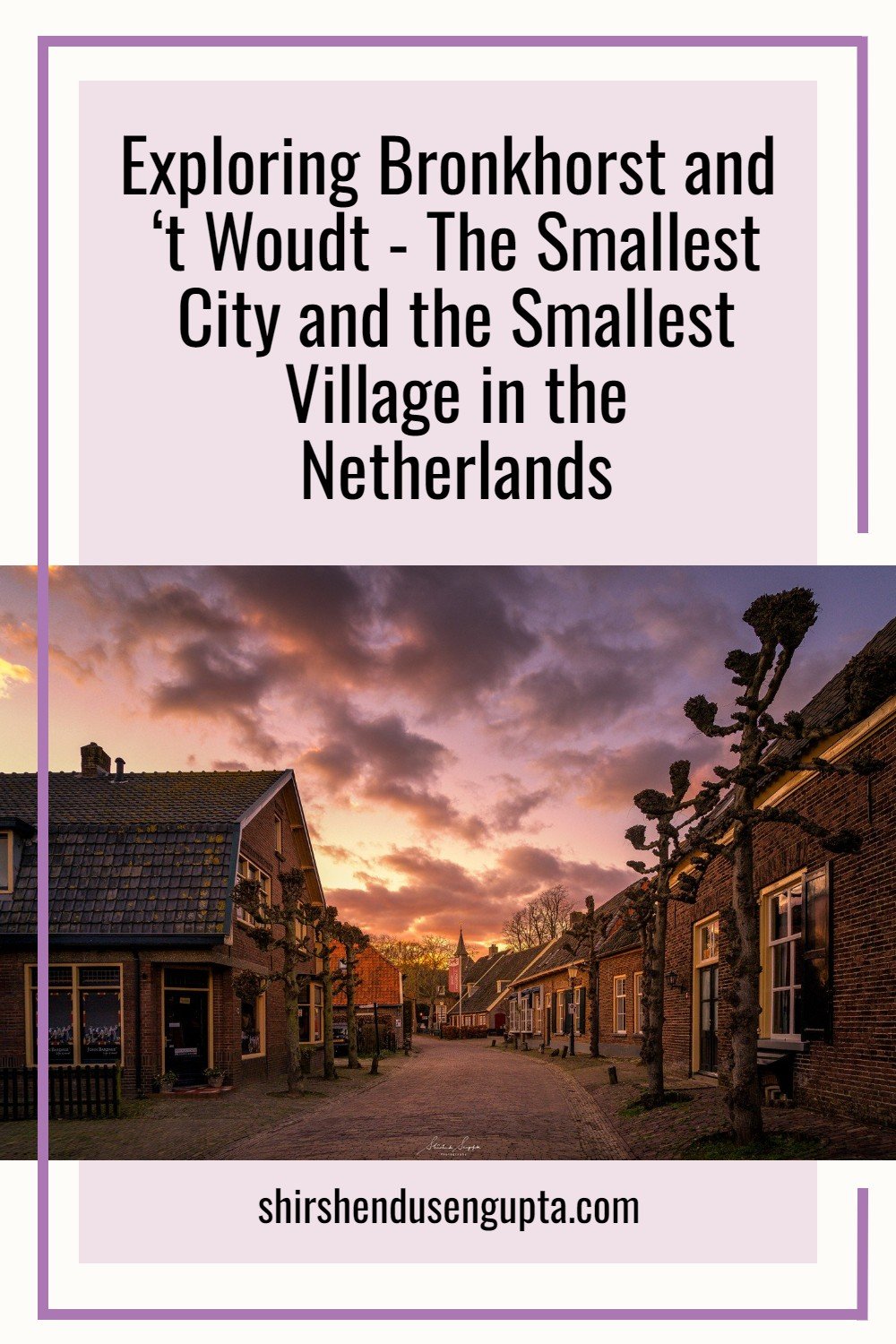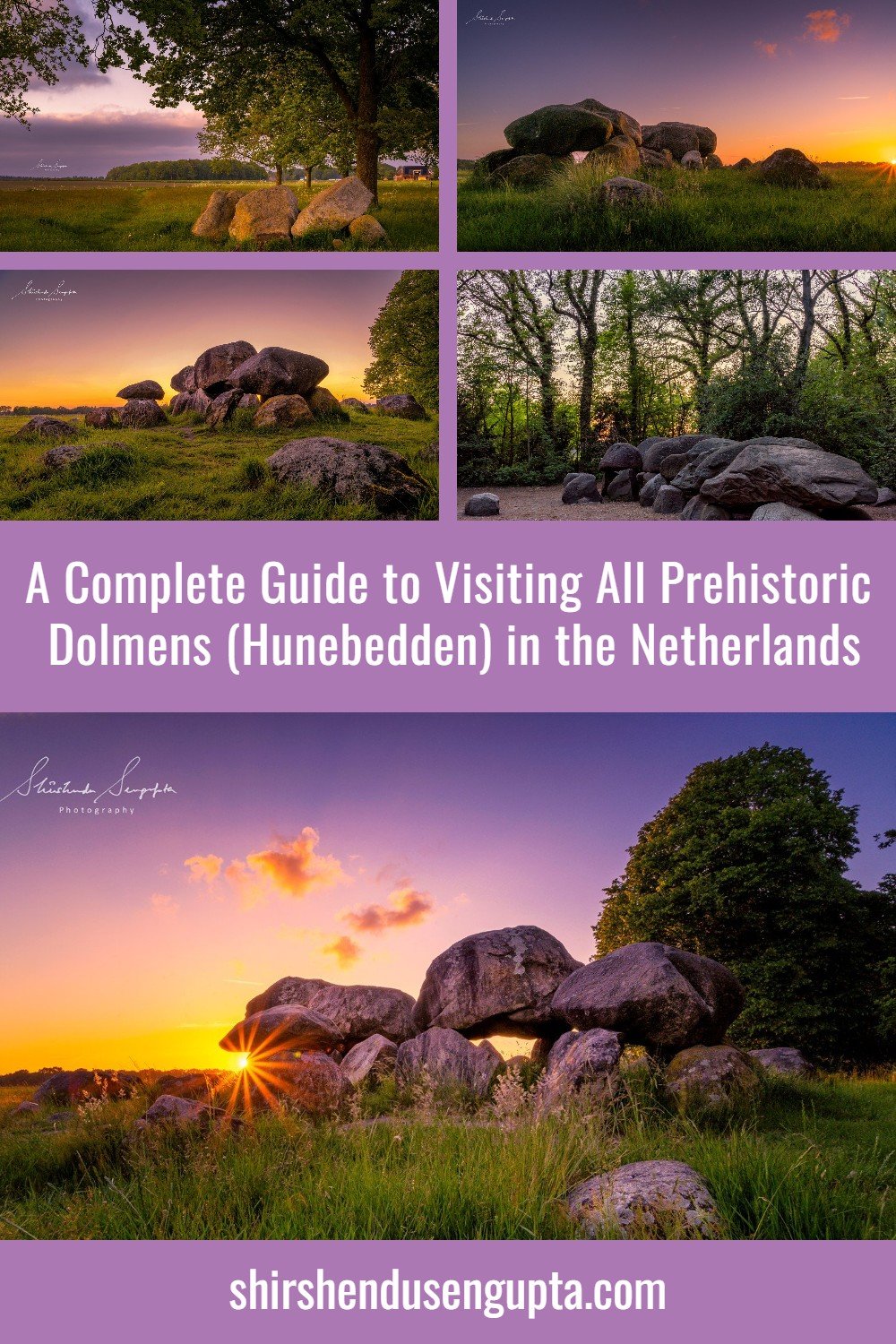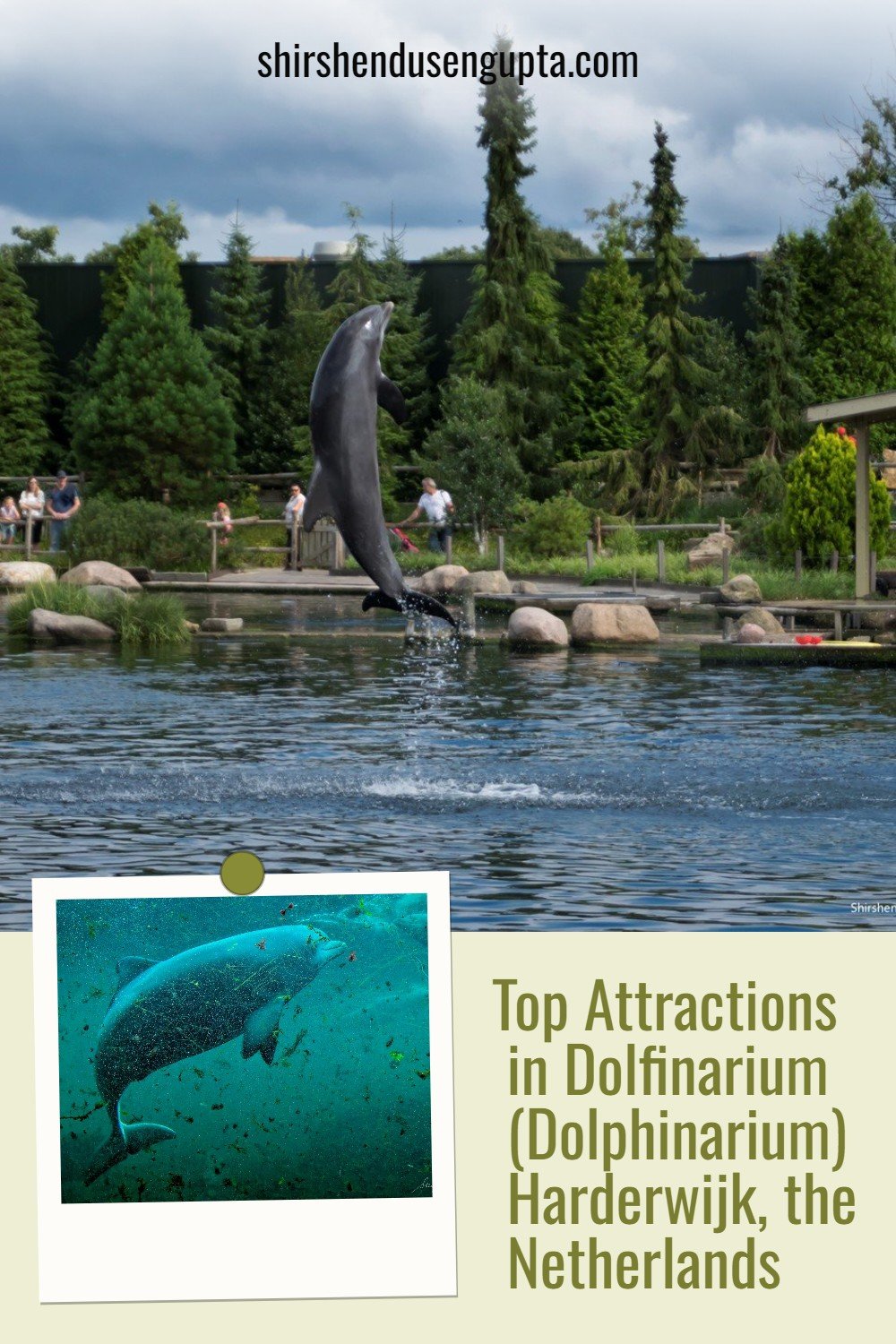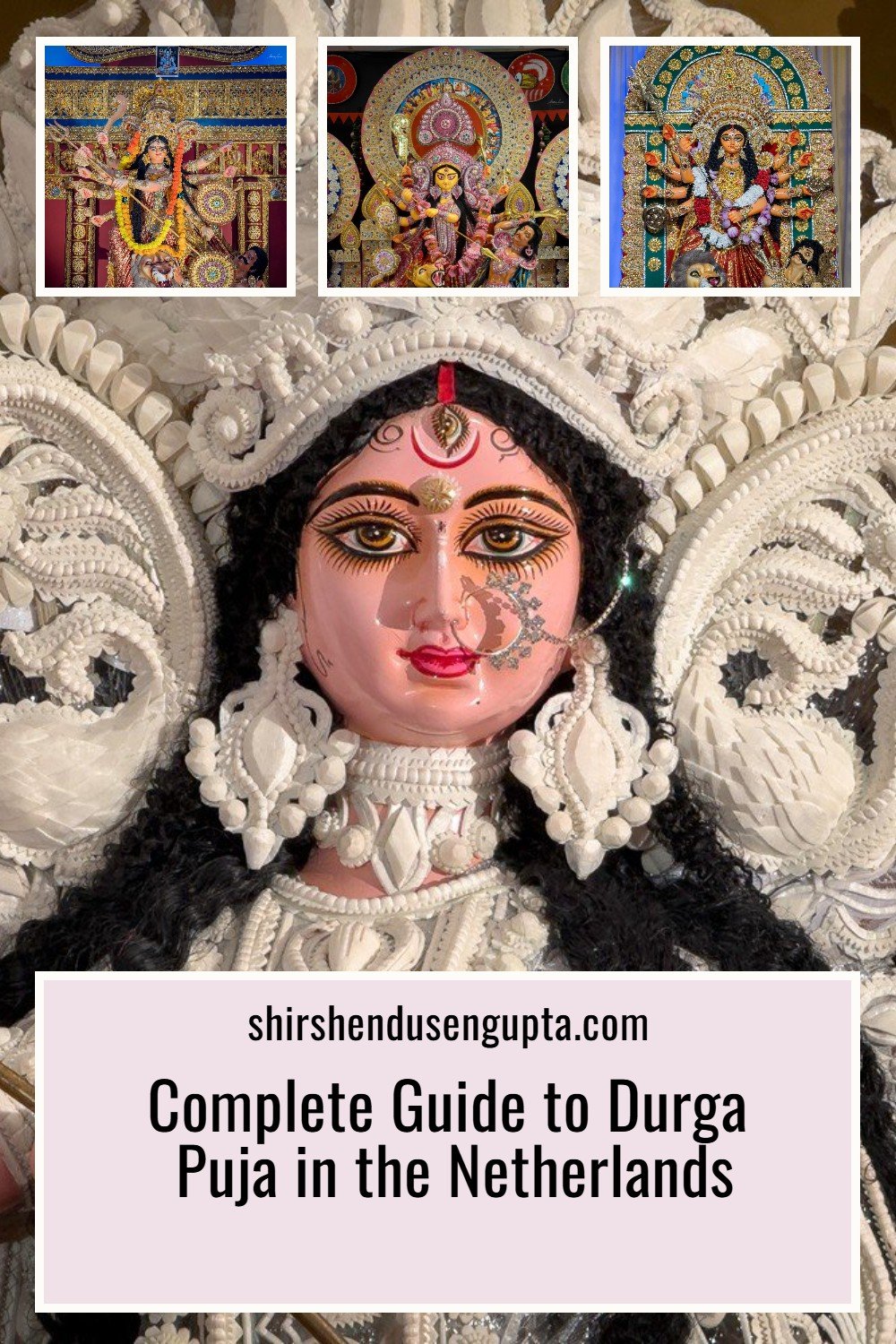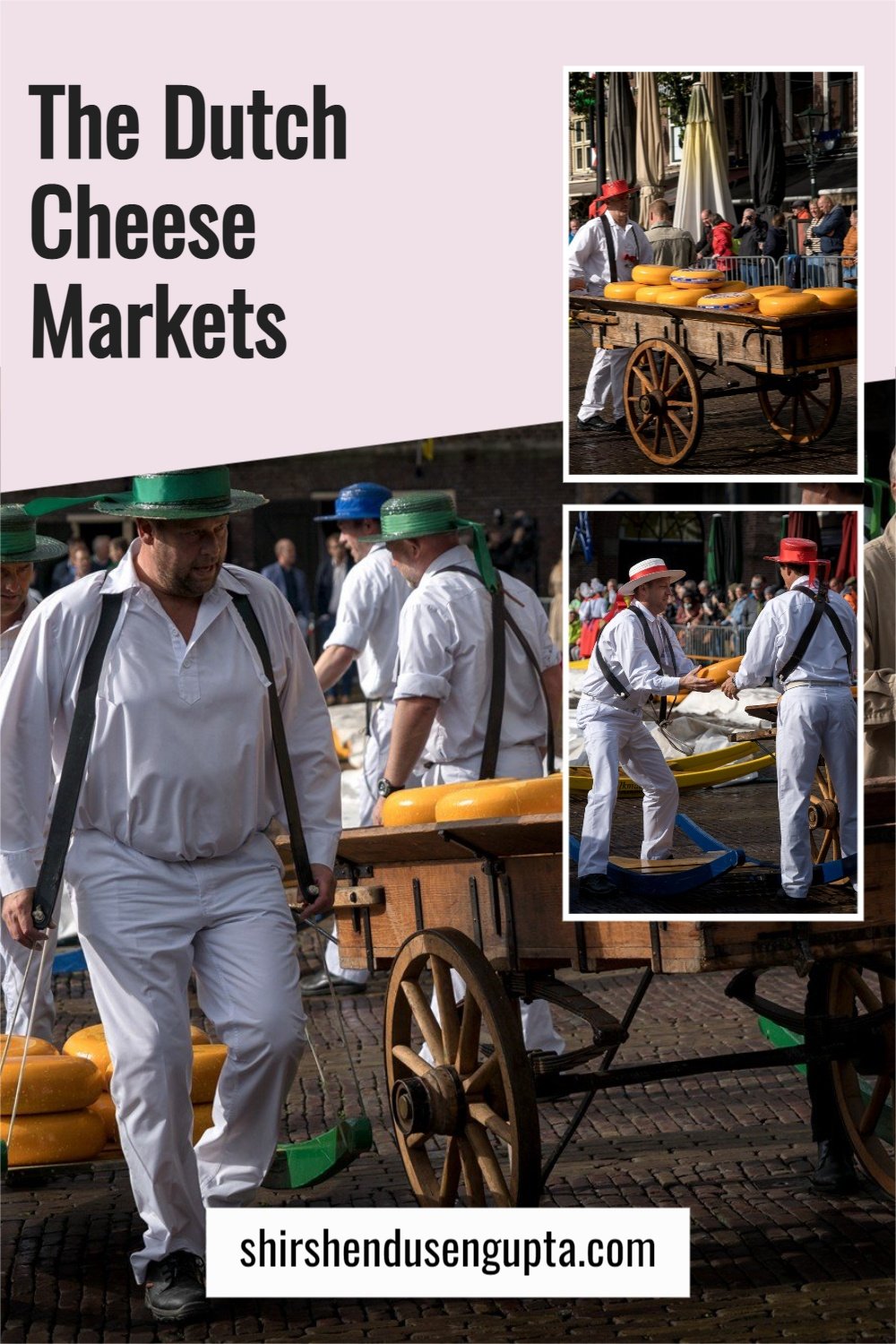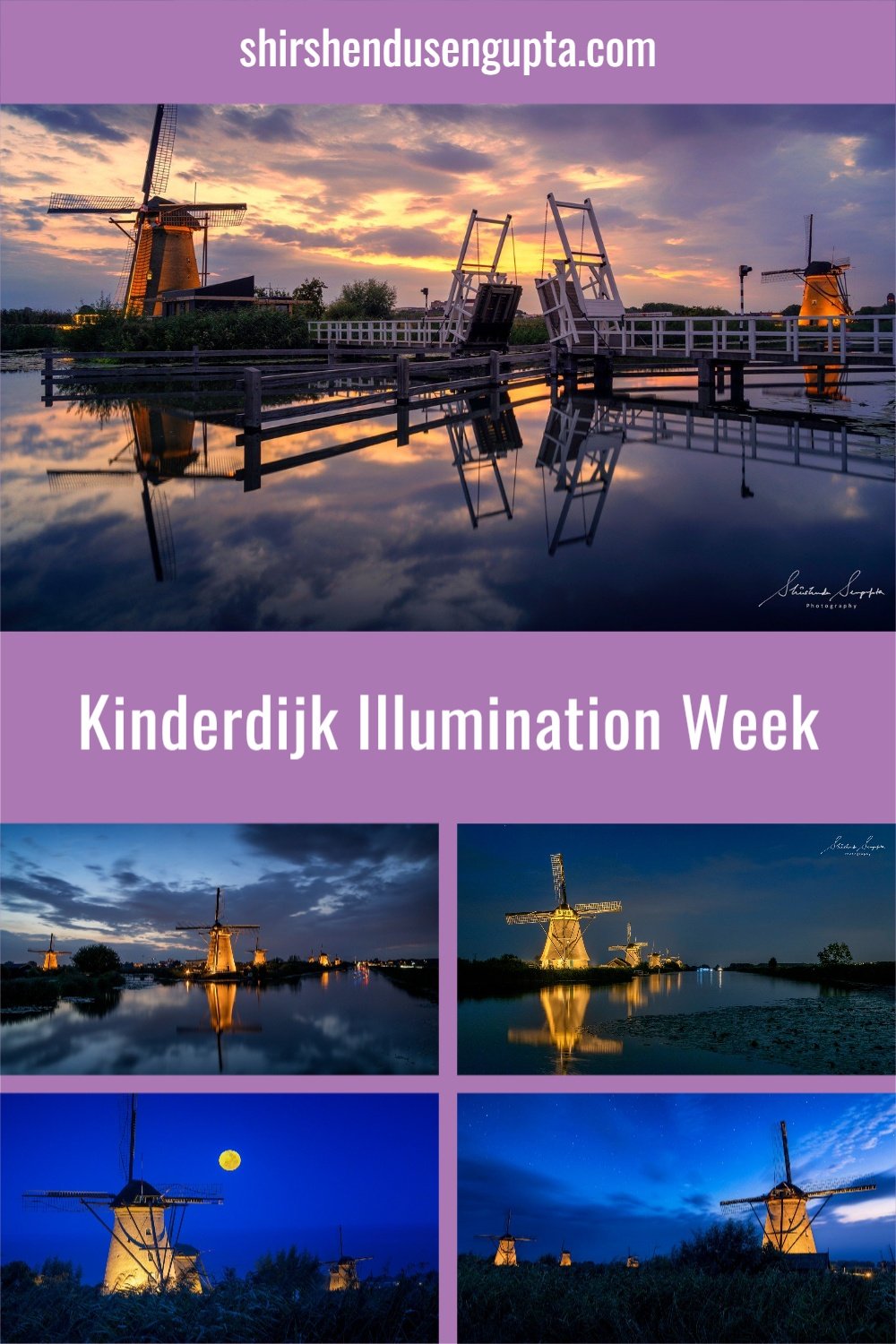Complete Guide to Visiting Bran Castle (Dracula's Castle) in Transylvania, Romania | Everything You Need to Know to Visit Bran Castle | Legends, Truth, Fun Facts, Things to Do
This page may contain affiliate links. If you make a purchase through one of them, we may earn a small commission at no additional cost to you. Your support helps us bring you genuine experience-based recommendations on photography, travel, and blogging.
Prologue
During a memorable Easter, we set off on a marathon road run, An Easter in Eastern Europe | A 6000 km Road Trip across Poland, Slovakia, Romania, Serbia, Bosnia-Herzegovina, and Austria from the Netherlands. This journey was more than just a long drive; it was a marathon of discovery, filled with charming towns, stunning landscapes, and cultural experiences that left us in awe at every turn. From historic city squares to winding mountain roads, each day brought new adventures and unexpected surprises. On this trip, we covered Western Romania.
We also embarked on another adventure named A Summer in Eastern Europe | An 8000 km Road Trip across Slovenia, Albania, North Macedonia, Kosovo, Bulgaria, Romania, and Slovakia from the Netherlands | Travel Itinerary, Tips, and Tricks. From winding mountain roads to sun-soaked coastal towns, each stop offered its own surprises and adventures. During this trip, we covered Central Romania, including Transylvania, the land of Dracula. So, based on our experience, today I’m going to share with you everything you need to know for visiting the famous Count Dracula’s Castle in Bran, Transylvania, Romania. Let the journey begin!
Welcome to Transylvania
Jaw-dropping hill-top castles, bedazzling monasteries, furrowed stone churches, groves of pine and deciduous trees, stretches of bright green meadow, medieval towns with cobbled alleys hosting chic street-side cafes, and a cacophony of sounds emanating from student bars and clubs echoing off the Gothic and baroque facades amidst a backdrop of the majestic Carpathian Mountains – probably these words better describe the fascinating Transylvania region of Romania that’s otherwise steeped in legends of werewolves, witches, and other dark creatures of the night.
However, the Anglosphere commonly associates Transylvania with vampires, thanks to the immortal creation of Bram Stoker - Dracula. This makes the castle in the small town of Bran in Transylvania, popularly known as ‘Dracula’s Castle,’ one of the main tourist attractions in all of Romania!
What is Bran Castle and why is it famous?
Gazing majestically over the town from a rocky bluff, Bran Castle doesn’t fail to enthrall its visitors one single bit. Today, a whole industry has sprung up around calling it "Dracula's Castle," despite very little being in common with Bram Stoker’s Dracula or with Vlad Tepes (also known as Vlad the Impaler), the historical character rumored to have inspired Bram Stoker to give birth to the character.
Constructed between 1377 and 1388 by Teutonic knights, Bran Castle was perched on a strategic vantage point with a view of Bran Pass, a heavily traveled mountain pass between Transylvania and Wallachia, the region under Vlad the Impaler's control in the fifteenth century. The building was destroyed in combat, but in 1382, as part of a 14th-century castle-building boom, a new citadel was erected in its place due to concerns about a Turkish invasion. The eighteenth century saw Bran Castle deteriorate as an administrative structure. In 1920, Queen Maria of Romania received the town of Bran as a token of appreciation for her efforts to bring the kingdom together. She returned the castle to its former glory. Princess Ileana, her daughter, inherited Bran Castle after her death and used it as a hospital during World War II. The Communist government took control of the castle in 1948, but in 2006, Princess Ileana's son, Dominic von Habsburg, regained possession of it. At the moment, Bran Castle is a museum dedicated primarily to Queen Marie of Romania.
Bran Castle is famous as it significantly influenced Transylvania's history in the following ways -
It played a major role in defending against the Ottoman Empire, between 1438 and 1442
It acted as a military stronghold until the middle of the eighteenth century
It gained fame as Count Dracula's Castle due to rumors that it served as the inspiration for the abode of one of the most recognizable characters in modern literature - Count Dracula
In an effort to boost tourism, Romania quickly began to promote Bran Castle as Count Dracula's castle
Why should you visit Bran Castle?
In my opinion, Bran Castle is worth visiting for the following reasons -
Architectural marvel - Bran Castle is a stunning medieval fortress situated on a Romanian cliff that offers breathtaking sweeping views of the surroundings
Historical significance - The stone walls of Bran Castle conceal a wealth of information, ranging from serving as a war hospital to guarding the borders of Wallachia to serving as a museum honoring Queen Marie
Dracula's Castle - The only castle that resembles Dracula's Castle, which is situated on a terrifying cliffside in a secluded area of Transylvania, is this one
The legacy of Queen Marie - Today, Bran Castle displays a selection of the adored monarch's possessions together with antiquated torture devices and other historical items that showcase the castle's poignant past
Who was Count Dracula and what is his Origin Story?
Count Dracula, first appeared in the gothic horror novel named “Dracula,” published in England in 1897, by the Irish writer Bram Stoker. He is depicted as a Count with a decaying castle located high above a valley perched on the Carpathian Mountains near the Borgo Pass with a river flowing below in the Principality of Transylvania. In this epistolary novel, the story is narrated through letters, diaries, and newspaper clippings, by multiple narrators from different perspectives. It begins with attorney Jonathan Harker traveling on business to stay at the castle of Count Dracula, a nobleman from Transylvania. After learning that Dracula is a vampire, Harker flees the castle, and the Count relocates to England where he terrorizes the seaside village of Whitby. Abraham Van Helsing leads a small squad that investigates, finds, and kills Dracula.
A centuries-old vampire and undead aristocrat from Transylvania, Count Dracula claims to be a Székely descended from Attila the Hun. He is depicted as a lovely, charming man with an air of aristocratic grace, in contrast to the hideous, corpse-like creatures that are the subject of Eastern European legend. During his chats with Jonathan Harker, he makes it clear that he is quite proud of his boyar origins and misses the old days, which he acknowledges have faded into legends of bravery, honor, and courage. In the book, Dracula is depicted as possessing the following characteristics -
Being a vampire, he rests in a death-like slumber with eyes open oblivious of his surroundings during the day, and is active during the night
He does not age out of senescence, but he needs fresh human blood to stay rejuvenated
He possesses extraordinary power, equal to the combined strength of 20 robust men
He doesn't reflect on mirrors or cast shadows
He has reptilian-like ability to scale vertical walls upside down
He can shapeshift into a bat, a wolf, a big dog, and a fog or mist
He possesses strong telepathic, illusionary, and hypnotic powers
He may also disappear "within limitations" and reappear anywhere at any time
He can control animals like foxes, wolves, moths, rats, owls, and bats
He can bite people to make them become vampires
He’s repulsed by garlic and holy objects and symbolism like crucifixes and sacramental bread
There is considerable debate regarding the claims made by some academics that historical personalities such as the Wallachian ruler Vlad the Impaler (known for his cruel means of execution) or the Countess Elizabeth Báthory (known to bathe in virgins' blood to stay youthful) served as inspiration for the creation of Dracula. Neither figure is mentioned in Stoker's notes. Stoker said that while on vacation, he saw the name Dracula in Whitby's public library and assumed it meant "devil" in Romanian.
However, it is strongly believed that the persona of Dracula was based on local Romanian legends. There is a belief in the existence of evil spirits, or "steregoi" (a variation of "strigoi"), in the villages surrounding Bran. It was thought, up until fifty years ago, that there were living beings called "strigoi" who went about their daily lives as usual in the hamlet but at night, as they slept, their souls left their bodies and tormented the people there. From midnight until the first cockcrow, when their ability to injure humans diminished, these demonic spirits torment their victims. “The undead [i.e., ghosts, vampires] suffer from the curse of immortality,” writes Stoker, “they pass from one period to another, multiplying their victims, augmenting the evil in the world.”
If you are interested in reading the 1897 original version of Bram Stoker’s classic, please click to buy it from Amazon.
What is the Connection between Bram Stoker’s Dracula and Bran Castle?
It's no secret that the Castle of Dracula from Bram Stoker's novel is largely responsible for Bran Castle's fame. Despite never having traveled to Central Europe, Irish novelist Bram Stoker used his imagination and his search skills to create the eerie and terrifying realm of Count Dracula. A school of thought believes that Stoker based his description of his fictional Dracula's Castle on the drawing of Bran Castle found in Charles Boner's book "Transylvania: Its Product and Its People" (London: Longmans, 1865). But Bram Stoker never confirmed it.
The author describes his Dracula castle as being "...on the very edge of a terrific precipice...with occasionally a deep rift where there is a chasm [with] silver threads where the rivers wind in deep gorges through the forests." The only castle in Romania that resembles the eerie fortress that Count Dracula called home in Bram Stoker's Dracula is Bran Castle. There doesn't appear to be any other link between Dracula's Castle and Bran Castle except from this. Following the castle's apparent popularity among aficionados, the Romanian government began to promote the castle as Dracula's castle to increase tourism.
Who was Vlad Tepes?
Transylvania and Wallachia, which were sandwiched between Christian Europe and the Muslim areas of the Ottoman Empire, often saw violent conflicts in the medieval period as Christian Crusaders either drove out the invading Ottoman forces or advanced eastward into the Holy Land. Vlad III (1431 – 1476), sometimes referred to as Vlad the Impaler (Vlad Tepes in Romanian) or Vlad Dracula, held the position of Voivode (ruler) of Wallachia three times between 1448 and his death in 1476. He is regarded as a national hero of Romania and one of the most significant kings in Wallachian history. Vlad III was born in 1431 in Transylvania. His father, Vlad II Dracul, was the ruler of the principality of Wallachia. Following his admittance into the ‘Order of the Dragon,’ a Christian military order backed by the Holy Roman emperor, Vlad II was given the surname Dracul, which means "dragon."
Vlad II brought his infant sons Radu and Vlad III with him on a diplomatic visit with Sultan Murad II in 1442. However, the gathering turned out to be a trap, as the three were taken into custody. Vlad II was released but Vlad III and Radu were held back. Vlad III and his younger brother received instruction in science, philosophy, and arts while in Ottoman captivity. Vlad also developed into a proficient rider and warrior. However, some versions suggest that he may have spent some of that time in prison and torture when he would have seen the Ottomans impaling their foes (a particularly brutal method of torture and execution, which involves inserting a wood or metal pole vertically through the vagina or rectum, or front to back through the torso and exiting via victim's mouth, shoulders, or neck).
But things got even worse for the rest of Vlad's family. In 1447, local warlords (boyars) deposed his father as Wallachian monarch, and he was slain in the wetlands close to Balteni, Wallachia. Mircea, Vlad's elder brother was blinded, tortured, and buried alive. It is historical conjecture as to whether these incidents transformed Vlad III Dracula (also known as the "son of the dragon") into a merciless murderer. But one thing is for sure: Vlad's reign of blood began shortly after his family's demise when he was released from Ottoman captivity.
The Ottomans captured Constantinople in 1453 and threatened to invade all of Europe. Vlad was put in charge of organizing a militia to repel an invasion of Wallachia. It is a widely accepted fact that he beheaded his opponent, Vladislav II, in one-on-one combat. Even though he was now in charge of the Wallachian principality, the ongoing conflict and internal struggle brought about by rival boyars had left his domains in a completely destroyed state. Vlad invited hundreds of them to a feast and had them stabbed and impaled.
Even while Vlad is generally acknowledged for having brought stability and order to Wallachia, there is no denying the brutality of his reign. In 1459, dozens of Saxon merchants in Kronstadt who had previously sided with the boyars were also impaled. In the same year, when diplomatic envoys from Ottoman Turks had come to meet Vlad, they refused to take off their caps, citing a religious tradition. Vlad complimented the ambassadors on their unwavering devotion to religion and made sure their caps would stay on their heads forever by having them nailed to their skulls. Once he was known to have dined surrounded by a veritable forest of vanquished warriors who were writhing on impaled poles. Nobody knows for sure if he really dipped his bread in the blood of his victims but the myths about his unfathomable sadism circulated around Europe for sure. Vlad is thought to have killed roughly 80,000 people in total using a variety of methods. This comprises the approximately 20,000 individuals who were executed by impaling and shown outside the city of Targoviste, the capital of Vlad Tepes. When the invading Ottoman Sultan Mehmed II saw the extent of Vlad's slaughter and the thousands of decomposing remains being picked apart by crows, he became so repulsed that he withdrew and returned to Constantinople.
However, Wallachia, Transylvania, and the rest of Europe rejoiced over Vlad's successes over the Ottoman invaders; Pope Pius II was particularly delighted. But his happy days didn’t last for long. Vlad was attacked in 1476 while en route to another Ottoman fight probably by his own soldiers mistaking him for a Turk as he frequently dressed up as a Turk in battles, and was slain and decapitated. According to most accounts, his head was given to Sultan Mehmed II in Constantinople as a trophy to be shown over the city's gates.
What is the Connection between Vlad Tepes and Bram Stoker’s Dracula?
If not for an 1820 book titled "An Account of the Principalities of Wallachia and Moldavia: With Various Political Observations Relating to Them" written by William Wilkinson, the British consul in Wallachia, the name of Vlad III Dracula might have remained a historical footnote during the notoriously violent Middle Ages. In his exploration of the area's past, Wilkinson refers to the infamous warlord Vlad Tepes. Despite never having been to Vlad's own country, Stoker is believed to have read Wilkinson's book and based his bloodthirsty, monstrous fictional character on Vlad III.
Probably that’s why he says in his book that taking up arms, as befitting his rank and status as a voivode, he led troops against the Turks across the Danube. According to his nemesis Abraham Van Helsing, "He must indeed have been that Voivode Dracula who won his name against the Turk, over the great river on the very frontier of Turkey-land. If it be so, then was he no common man: for in that time, and for centuries after, he was spoken of as the cleverest and the most cunning, as well as the bravest of the sons of the land beyond the forest."
If you are interested in reading William Wilkinson’s 1820 book "An Account of the Principalities of Wallachia and Moldavia: With Various Political Observations Relating to Them", please click to buy it from Amazon.
What is the Connection between Vlad Tepes and Bran Castle?
Vlad Tepes ruled from the now-ruined Poenari Fortress. But he's connected to Bran Castle, somehow. Vlad took part in several trips to punish the German traders in Brasov for not following his directives regarding their trade in his marketplaces in the Walachian region. The path that was used to get to Wallachia is Bran, the shortest gorge, which runs from Brasov to Targoviste, the capital of Vlad Tepes. The original customs houses, where taxes were collected from merchants entering Transylvania, still stand at the base of Bran Castle.
Since the Bran lords represented the Citadel of Brasov, which was at odds with Vlad the Impaler, relations between them were not very friendly. It is unknown if Vlad Tepes conquered Bran Castle. But in the fall of 1462, Vlad Tepes seems to have been transported to Bran Castle and imprisoned there for two months following his capture by forces of Matei Corvin, the Hungarian king near the fortress of Podul Dambovitei, near Rucar. This is confirmed in the recently released book Vlad the Impaler – Dracula, written by Gheorghe Lazea Postelnicu and published by the Mirador Printing House, Arad, in 2002. Vlad was then kidnapped and imprisoned at Hungary's Visegrad Fortress, which is close to Budapest.
Statue of Vlad Tepes in his birthplace, Sighisoara, Transylvania
What is the Connection between Queen Marie of Romania and Bran Castle?
Queen Marie of Romania undoubtedly brought the nearly deserted palace back to life. As one of the most attractive queens in Europe at the time, Queen Marie of Romania (1875–1938) was the nephew of Queen Victoria. In 1893, she wed Ferdinand, who would go on to become King of Romania. Transylvania joined Romania following World War I, and the Bran Castle was given to Queen Marie by the Brasov City Council as a courtesy to the newly crowned monarch of all Romanians.
With the assistance of Czech architect Karel Liman, the Queen used her artistic abilities to renovate the Bran Castle into a vacation residence next to the Balcic summer house by the Black Sea. During this era, a typical home consisted of wood, including the Tea House (Casa de ceai), a stone guest house, a wooden chapel, and staff housing. Soon, the Queen was actively engaged in the community, providing financial help to families and providing opportunities for education for the children. The queen used to dress traditionally Romanian while she was in Bran and in the villages.
Among the last romantics to breathe new life into ancient stones was Queen Marie. By one of her final desires, her remains were transferred to Bran following her passing to be nearer to the location she cherished and her son Mircea's cemetery, who passed away in October 1916 at the age of 4.
Brans Castle’s Historical Timeline
1212: The Teutonic Order constructs a wooden fort at the northern tip of the Rucar-Bran mountain pass, which links the Transylvanian (central Romania) and Walachian (southern) historical provinces. Bran means "gate" in Slavic.
1245: The Tatars demolish Fort Bran.
1377: The Saxons of Kronstadt (present-day Brașov) are granted permission by King Louis the Great - Louis I of Anjou, to construct a stone castle.
1388: Work on the Bran castle is finished. The people of Kronstadt contributed all the money required to build the fortress. Bran was constructed not as a royal palace, but rather for defense and to halt the Ottoman Empire's growth.
1407: Prince Mircea "the Elder" of Wallachia, an ally, receives Bran Castle as a fief from King Sigismund of Luxembourg.
1419: Wallachia experiences political unrest after Prince Mircea's death; the Princes of Transylvania are occasionally given the lease of Bran Castle.
1441: The Turks invade Transylvania, but John Hunyadi drives them back at Bran Castle.
1456–1462: Vlad Tepes travels through Bran Gorge multiple times with his army on his route to Brasov, where he launches a raid to get revenge on the Saxons for raising customs duties on Walachian goods and endorsing his rival for the throne. In a battle, Vlad the Impaler kills hundreds of Saxons and sets fire to Brasov's suburbs. The Saxons painted Vlad as "a tyrant and extremely ruthless" because of his cruelty.
1593: The castle is partially destroyed by an explosion in a powder factory.
1617: The castle's roof is destroyed by a powerful storm.
1620s: Renovations are made to the donjon, round tower, and gate.
1651: Brasov sells the castle to George II Rackoczi on April 25, 1651.
1723: Renovations are made to the castle's northern tower.
1836: Bran Castle loses its military and commercial significance and stops being a customs post after the border between Transylvania and Wallachia was shifted to the highlands, at Pajura, in 1836. However, it still serves as an administrative headquarters.
1883 and 1886: The castle's damages from the Russo-Turkish War of 1877 and the 1848 Revolution are restored.
1888: The Forest Department of the Region receives the castle from the City of Brasov; the castle is occupied by Brasov-born foresters, woodsmen, and forest forest inspectors. After thirty years of disregard, the castle starts to deteriorate.
1920: Romania's Queen Maria, "the great queen who spreads her blessing everywhere she walks, thus winning, with an irresistible momentum, the hearts of the entire country's population," (text taken from the donation deed, which Brasov City Council unanimously authorized) is given Bran Castle by the people of Brasov as a gift.
1920–1932: Queen Maria chooses Bran Castle as her home. The 57-room castle is renovated, and architect Karen Liman is brought in to turn the building into a summer palace fit for a king. An old (fake) fireplace was moved during renovations, and an escape staircase—a secret passageway that connected the first and third floors—was found. The 188-foot-deep well at the castle could not supply enough water, so a water conduit was built to bring in running water from neighboring natural springs.
1932: To supply electricity to the nearby settlements of Bran, Simon, and Moeciu as well as the castle, a hydroelectric power station is constructed. Additionally, staff quarters, a guesthouse, a wooden chapel, stables, and a garage, are also constructed. A tea house, two ponds, and an English park have been added to the area surrounding the castle. In order to facilitate the Queen's arthritis-stricken mobility between the castle and the park, an elevator was built inside the well shaft.
1938: Queen Maria of Romania passes away, leaving Bran Castle to her daughter Princess Ileana, who married Austria's Archduke Anton.
1940: Queen Marie's heart, housed in the Stella Maris chapel of the Balchik castle on the Black Sea, is transferred to Bran in its sarcophagus when Romania loses the South Danube provinces following the Vienna Award.
1944: Princess Ileana converts Bran Castle into a medical facility, where she treats patients in her capacity as a nurse.
1948: Princess Ileana and her family are forced to flee Romania by the recently imposed communist government.
1956: Bran Castle is turned into a museum by the communist authorities. The museum is organized into three sections: Ethnography, which had ordinary houses in the park next to the castle, Medieval Customs, and the Castle, which holds royal treasures.
1987: Communist officials begin extensive repair efforts.
1993: The Bran Castle Museum is open after restoration work.
2006: Following years of legal battles, Princess Ileana of Romania's son, Dominic von Habsburg, receives back Bran Castle, which is now a private museum.
Things to Do at Bran Castle
Check out the Donjon
One of Bran Castle's most notable features is the Donjon, which is a prime example of Gothic architecture. Sadly, lightning struck the previous tower that was here, and the astonishingly well-maintained tower was built in 1593.
Explore the Rooms with Antiques
Bran Castle, which has 57 rooms overall, is a testament to centuries of history. King Ferdinand's painstakingly remodeled rooms are particularly noteworthy. Exquisite furniture, a dagger set, and armor are shown in his suite. These large rooms include elaborate hand-carved fittings on the walls and ceilings. You may also tour Queen Marie's home and view some of her possessions, which show how much she loved the castle. Queen Marie gathered literature, statues, icons, and sets of china. Throughout the castle, there are also hand-carved fixtures, paintings, ceramics, and other small features made in Romania.
Enjoy the view from the Terrace
You can get a great view of the Transylvanian countryside from the terrace of Bran Castle.
Buy Dracula Souvenirs
You can buy several local handmade Dracula souvenirs from the stalls in the courtyard of Bran Castle.
Visit the Haunted Castle
You can also visit the Haunted Castle attraction located next to the souvenir stalls.
Peep into the Old Water Well
At Bran Castle, there once was a water well that is now dry. But you can explore the top of this well, which is currently only a decorative element. Drilling through solid rock, a sixty-foot-deep well was created when the castle was constructed in the 1400s. There used to be a hidden room in this well directly above the water, which was utilized as a hideout during invasions. This hidden chamber was expanded horizontally to run beneath the castle by Queen Marie during her renovations, and she connected an elevator to the tunnel so she could leave the building without using the stairs.
Visit the Torture Chamber
Bran Castle's Torture Chamber provides a horrifying look into medieval justice. The pain of the past echoes in this haunting room, offering a dismal view into the harsh reality of a bygone period. Here, there are rumors that Vlad III was imprisoned and tortured. Some of the torture devices you may uncover when visiting Bran Castle add to the eerie aura of the place. One of the devices' most noticeable characteristics is the torture chair, which is covered in spikes. There are several other devices as well, such the iron maiden and the rack.
Check out the Secret Passage
Inside Bran Castle, there is a small, narrow stairway with intricate carvings on it that was once used as a covert exit in an emergency. It is constructed such that only one person can pass through at a time and connects the first floor to the third. This tunnel was hidden for decades until Queen Marie chose to restore the castle in 1920. The entrance was hidden behind a fake fireplace.
Walk through the Time Tunnel
The Time Tunnel at Bran Castle takes guests on a captivating centuries-long journey that brings the past to life and reveals the many facets of Bran Castle's lasting influence through vibrant exhibitions and interactive displays.
Read the Romanian legends at the History of Dreads
Numerous mythological tales exist in Romania about monsters, spirits, and other supernatural entities that haunt the people who live in and near Bran at night. Bran Castle's History of Dreads display provides some insight into some of these legendary animals. You may read more about the Werewolf, the Iele, the Strigoi, the Grim Reaper, and many other monsters here.
How to Visit the Bran Castle
Address: Strada General Traian Moșoiu 24, Bran 507025, Romania
Car: We stayed in Sinaia to visit Peles, Pelisor, and Bran Castle. So we drove from Sinaia to Bran Castle by car. At Bran Castle, there is a paid parking area for cars. But if you'd rather save a few bucks, you may park for free in Bran village, which is a few hundred meters past the castle.
Taxi: If you are staying in Brasov (which most people do who want to visit Bran Castle only and not Peles Castle also, like us), taking a taxi from Brasov to Bran Castle is the fastest option (around 35 minutes). But since they cannot ensure a repeat pickup, taxis will try to charge twice the fare (although in my opinion, this is a con). When we visited, the meter fare was around 110 Lei (22.10 EUR). To obtain a better deal, consider using a ridesharing app like Bolt or Uber.
Public Transport: If you want to travel to Bran Castle by public transport, you can take the bus that departs from the Autogara 2 Bus Station on the outskirts of Brasov. It takes around 45 minutes to reach Bran Castle. The ticket can be purchased straight on the bus for about 13 Lei (2.61 EUR). The breathtaking mountainous backdrop is juxtaposed with a modern highway along the route. The buses leave every hour from 09:00 to 19:00.
Opening Hours and Ticket Prices: For information on opening hours and ticket prices, visit their website mentioned below
Website: bran-castle.com
Epilogue
So that was everything you need to know for visiting Bran Castle (Dracula’s Castle) in Transylvania, Romania. Please let us know in the comments below if you enjoyed reading this article.
To know more about more such intriguing places to visit in Romania, please read our article Instagrammable Romania | The Most Beautiful and Romantic Places to Visit in Romania. And, if you wish to read the day-by-day account of our complete 6000 km road run across Eastern Europe during Easter, please visit our article An Easter in Eastern Europe | A 6000 km Road Trip across Poland, Slovakia, Romania, Serbia, Bosnia-Herzegovina, and Austria from the Netherlands or if you’re curious to follow along on our other epic adventure, A Summer in Eastern Europe | An 8000 km Road Trip across Slovenia, Albania, North Macedonia, Kosovo, Bulgaria, Romania, and Slovakia from the Netherlands | Travel Itinerary, Tips, and Tricks, be sure to give it a read as well. Until then, merry traveling and happy shooting!
Pin the article
Bookmark the article for reading later!
Want to license/buy photos in the article?
License photos for commercial/editorial use or buy photo prints!
Want us to write an article for you?
Articles for magazines, newspapers, and websites!
Watch our Videos
Check out our videos on our Youtube Channel!
Join the Newsletter
Get updates on our latest articles!
We respect your privacy. Read our policy here.






